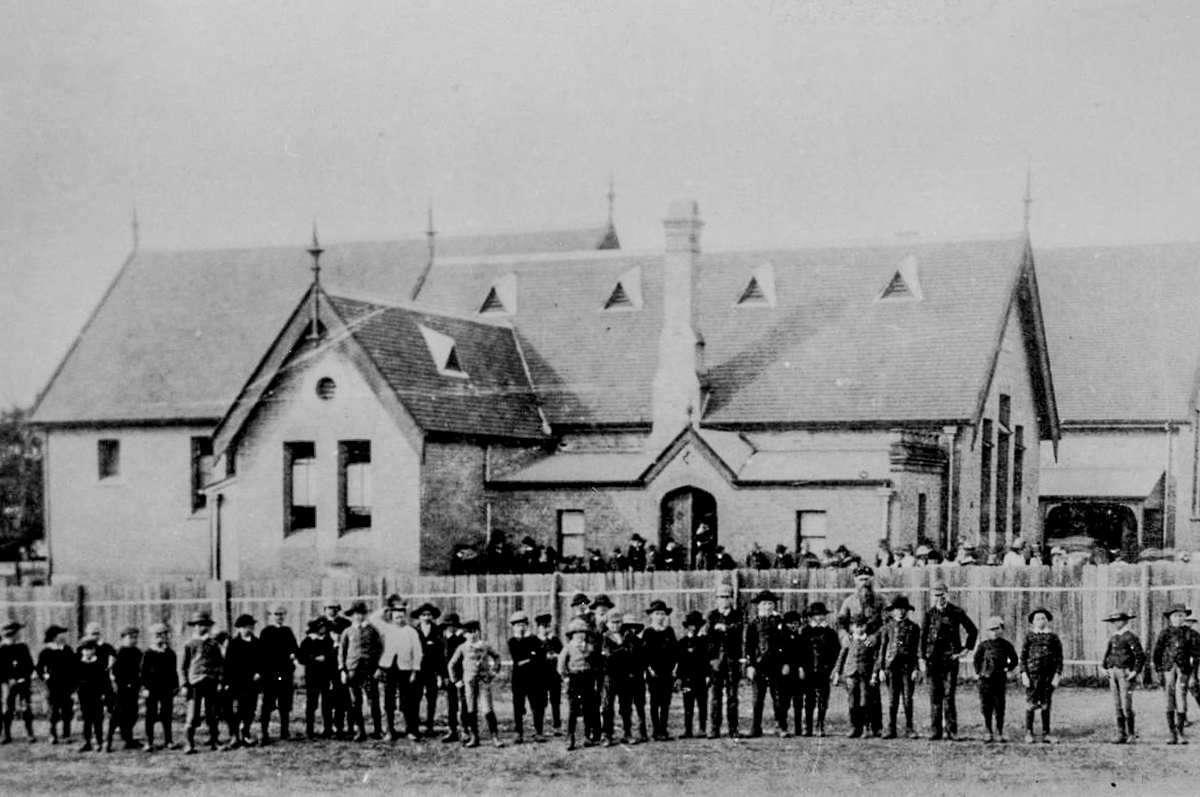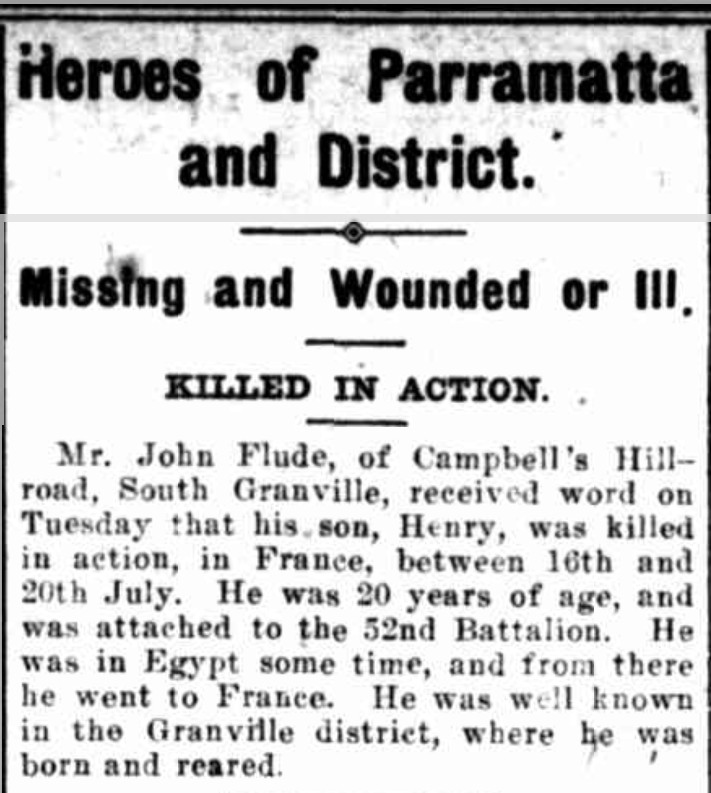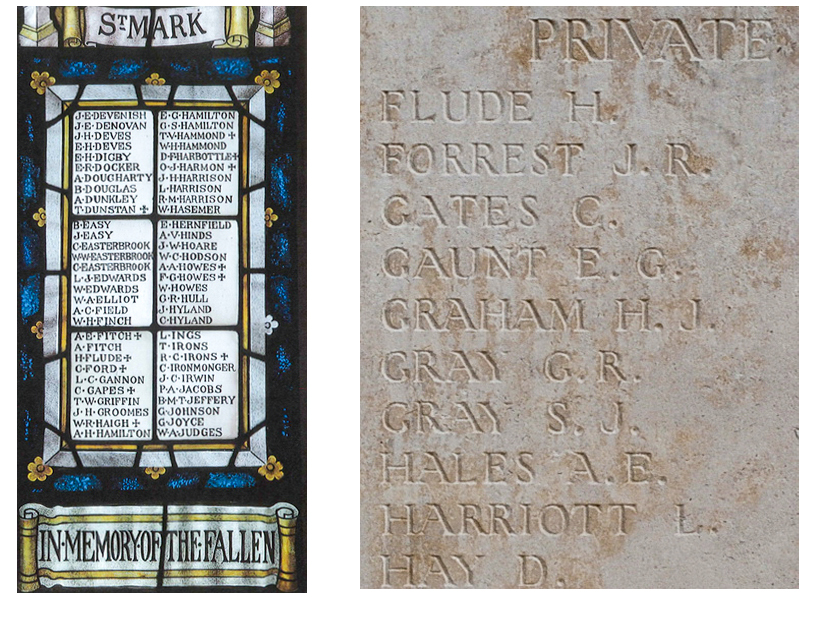Private Henry William FLUDE
Eyes brown, Hair brown, Complexion dark
Henry William Flude
Can you help us identify Henry?
Henry was killed in Action at Fromelles. As part of the 54th Battalion he was positioned near where the Germans collected soldiers who were later buried at Pheasant Wood. There is a chance he might be identified, but we need help.
In 2008 a mass grave was found at Fromelles, a grave the Germans dug for 250 (Australian) bodies they recovered after the battle. As of 2024, 180 of these soldiers have been identified via DNA testing. We are still searching for suitable family DNA donors for Henry.
If you know anything of contacts for Henry here in Australia or his relatives from England, please contact the Fromelles Association.
See the DNA box at the end of the story for what we do know about his family.
Early Life
Henry William Flude was born on 3 December 1895 in Rockhampton, Queensland to John (Jack) and Lydia (nee Bevis) Flude. They had seven children, but only four survived beyond four years old - Henry, Arthur, Ellen and Gladys. Jack came from Leicester, England and Lydia from Queensland. Her mother was born in Queensland and her father had emigrated to Australia in 1862. Jack worked as a butcher.
The family originally lived in Queensland, but moved to Granville, NSW at some time after 1900. Henry attended the Granville South Public School and he became a cart driver after his schooling. He also spent four years in the 20th Battalion of the Citizens Military Forces, as part of the Commonwealth Government’s compulsory military training scheme.
Off to War
Henry enlisted with the Australian Imperial Force on 27 October 1915 at Holsworthy, NSW and was initially assigned to the 18th Battalion, 8th Reinforcements. This battalion was fighting on the Gallipoli Peninsula at that time as part of the 5th Infantry Brigade, 2nd Division. His military training in Australia was short and he embarked from Sydney for Egypt on 20 December 1915 aboard the troopship HMAT A60 Aeneas, disembarking in Suez on 17 January 1916.
The 18th Battalion had redeployed from Gallipoli to Egypt on 10 January. They were initially encamped at Tel-el-Kebir, a camp of 40,000 men about 110 km northeast of Cairo. It was here that Henry and his fellow reinforcements would join the unit. The 18th moved to Duntroon Plateau on 26 January. Training and integration of the new soldiers continued throughout their stay in Egypt. By early March they were moved to Moascar, readying for departure to the Western Front. However, with the ‘doubling of the AIF’ after Gallipoli as it expanded from two infantry divisions to five, major reorganisation had been underway from early in the year.
Henry was reassigned to the newly formed 54th Battalion, joining them on 3 April at the Ferry Post camp on the Suez Canal. The 54th then spent all of May at the front-line trenches in Katoomba Heights, 8 miles from the Suez Canal, guarding from any potential threats posed by the Ottoman Army.
Fromelles
The call to the Western Front to join with the British Expeditionary Force came on 20 June and the 982 soldiers of the 54th Battalion left Egypt. They sailed on the Caledonian for the 10-day trip to Marseilles via Malta. After disembarking in France, they immediately entrained for a three-day train trip to Hazebrouck, 30 km west of Fleurbaix in northern France.
This area near Fleurbaix which was known as the “Nursery Sector” – a supposedly relatively quiet area where inexperienced Allied troops could learn the harsh realities of Western Front trench warfare against the Germans. But the quiet times and the training period did not last long.
By 2 July the Battalion was billeted in barns, stables and private houses in nearby Thiennes for a week. Training now included the use of gas masks and exposure to the effects of the artillery shelling. It was hoped that these tests would “inspire the men with great confidence”
Source - AWM4 23/71/6 54th Bn War Diaries July 1916 page 2
On 10 July they moved to Sailly sur la Lys and on 11 July they were into the trenches in Fleurbaix. The health and spirit of the troops was reported as good. After a few days of being exposed to the routines of life in the trenches, they moved back to billets in Bac-St-Maur. The 54th’s Major Roy Harrison wrote home on 15 July. With his Gallipoli experience, the tone in this letter was certainly circumspect for the upcoming battle:
`“The men don’t know yet what is before them, but some suspect that there is something in the wind. It is a most pitiful thing to see them all, going about, happy and ignorant of the fact, that a matter of hours will see many of them dead; but as the French say ‘C’est la guerre’.”`
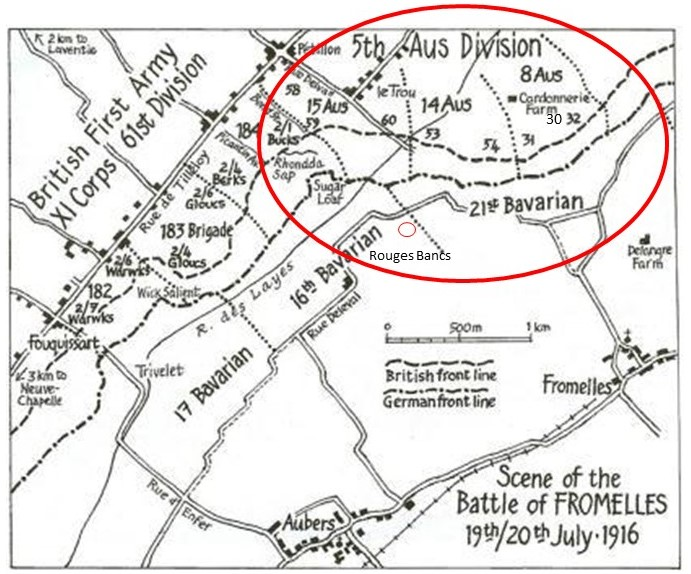
The overall plan was to use brigades from the Australian Fifth Division to conduct a diversionary assault on the German trenches at Fromelles. The main attack was planned for the 17th, but it was delayed due to the weather. The weather soon improved and by 2.00 PM on 19 July they were in back in the trenches, ready for the Germans. On 19 July, Zero Hour for advancing from their front-line trenches was to be 5.45 PM, but the Germans knew this attack was coming and were well-prepared.
They opened a massive artillery bombardment on the Australians at 5.15 PM, causing chaos and many casualties. The main objective for the 54th was to take the trenches to the left of a heavily armed, elevated German defensive position, the “Sugar Loaf”, which dominated the front lines. If the Sugar Loaf could not be taken, the 54th and the other battalions would be subjected to murderous enfilade fire from the machine guns and counterattacks from that direction. As they advanced, they were to link up with the 31st and 53rd Battalions.
At 5.50 PM they began to leave their trenches. They moved forward in four waves– half of A & B Companies in each of the first two waves and half of C & D in the third and fourth. The first waves did not immediately charge the German lines, they went out into No-Man’s-Land and lay down, waiting for the British bombardment to lift. At 6.00 PM, the German lines were rushed. The 54th were under heavy artillery, machine-gun and rifle fire, but were able to advance rapidly.
The 14th Brigade War Diary notes that the artillery had been successful and “very few living Germans were found in the first and second line trenches”
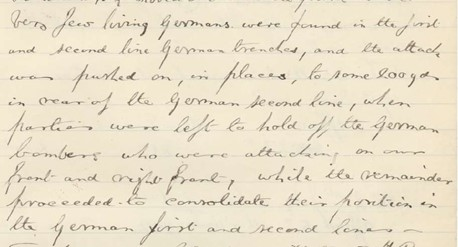
Some of the advanced trenches were just water filled ditches which needed to be fortified to be able to hold their advanced position against future attacks. They were able to advance and link up with the 53rd on their right and, with the 31st and 32nd, occupy a line from Rouges Bancs to near Delangre Farm. However, the 60th on their far right had been unable to advance due to the devastation from the machine-gun emplacement at the Sugar Loaf, leaving this flank exposed.
As the battle raged on, reinforcements and supplies were key needs for supporting the fighting, but Lieutenant Harris also noted the importance of ‘creature comforts’ for morale.
They held their lines through the night. However, with heavy losses and the German counterattacks, the Australians were eventually forced to retreat. This was complicated by the fact that the exposed right flank of the 54th had allowed the Germans access to the first line trench BEHIND the 54th/53rd and the German advances in the trench had to repelled as they retreated.
By 7.30 AM on the 20th the 54th were pulled all the way back to Bac-St-Maur, 5 km from the front. In this very short period of time, of the 982 soldiers of the 54th that left Egypt, initial roll call counts were 73 killed, 288 wounded and 173 missing.
To get some perspective of the battle, when Charles Bean, Australia’s official war historian, attended the battlefield two and half years later, he observed a large quantity of bones, torn uniforms and Australian kit still on the battlefield. Ultimately, 172 soldiers from the 54th were killed in action or died from their wounds.
After the Battle
There are no witness statements about Henry’s role in the battle or what happened to him. A formal statement about him having been Killed in Action was issued on 27 September 1916, but it only states he was killed 19-20 July, with no further details.
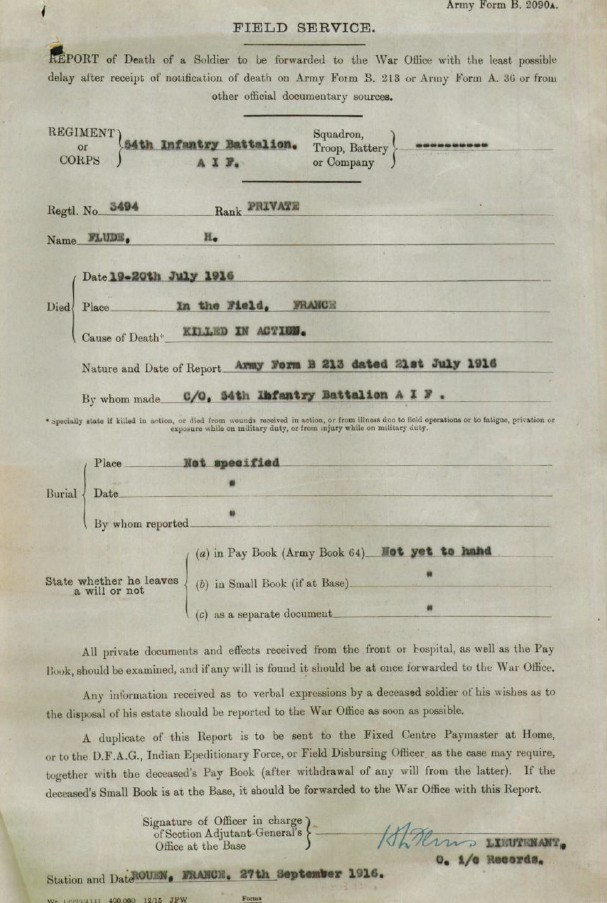
As reported in the local papers, he was well known in his local area and was clearly missed by his family.
Seeking some degree of closure, Henry’s mother wrote to the Army in November 1916 asking to have his personal effects sent to her. Many soldiers’ families made this request although only a limited number of the requests for enlisted men’s effects were able to be met, but Henry’s few, very personal items were returned to the family in June 1917.
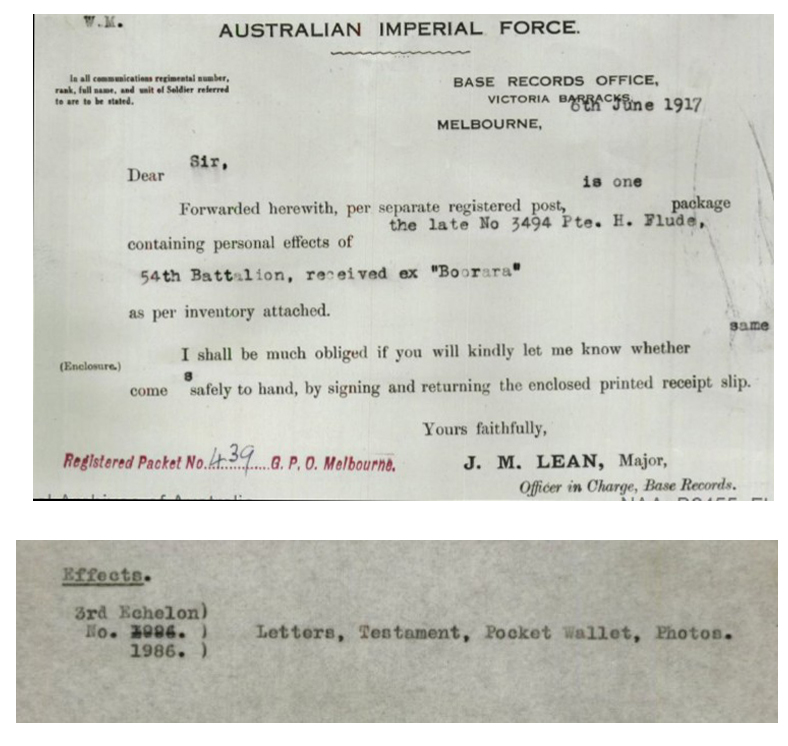
Henry was awarded the British War Medal, the Victory Medal, a Memorial Plaque and a Memorial Scroll.
He is commemorated at:
- V.C. Corner Australian Cemetery Memorial (Panel 10), Fromelles, France,
- the Australian War Memorial,
- Granville St Mark's Anglican Church Memorial Windows
- and the Granville War Memorial.
###Could Henry Still Be Found?
After the battle, the Germans collected 250 soldiers who were later buried at Pheasant Wood. The 54th was fighting in the vicinity of the gravesite and, as of 2024, 28 of the 102 unidentified soldiers from the 54th have been able to be identified by DNA matching from family members. These men have been formally recognised in the Pheasant Wood Cemetery.
A total of 180 soldiers have been identified. Henry could be one of the remaining 70 unidentified soldiers from the grave, but we are still searching for suitable family DNA donors. If you know anything of Henry’s contacts here in Australia or his relatives from England, please contact the Fromelles Association.
DNA samples are being sought for family connections to
| Soldier | Henry William Flude (1895-1916) |
| Parents | John Flude (1868-1940) b Leicester, Leicestershire, England, d Sydney and Lydia Hepzibah Bevis (1872-1941) b Queensland |
| Siblings | Bertie John (1894-1898) b Rockhampton QLD d Rockhampton | ||
| Arthur Thomas (1898-1990) b Rockhampton QLD, d Granville, m Elsie Miriam Bullock | |||
| Ellen Maud (1900-1982), b Rockhampton QLD, m William Archibald Craig | |||
| Herbert J (1906-1908) b Granville NSW | |||
| James (1909-1909) | |||
| Gladys Amy (1911-2000), b Granville NSW, d Sydney NSW, m William Edgar Kendrick |
| Grandparents | |||
| Paternal | Unknown | ||
| Maternal | Thomas Bevis (1836-1928) b London, England, d Rockhampton QLD and Hannah Kezia Jones (1843-1886) b Stoke Dameral, Devon, d Rockhampton QLD |
The Fromelles Association would love to hear from you

Contacts
(Contact: carla@fromelles.info or geoffrey@fromelles.info).
(Contact: army.uwc@defence.gov.au or phone 1800 019 090).
Donations
If you are able, please contribute to the upkeep of this resource.
(Contact: bill@fromelles.info ).

